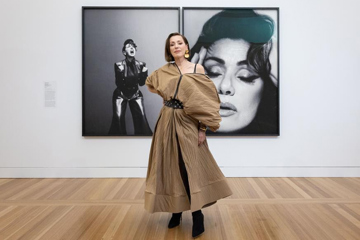Live Review: Robin Fox
"A unique and engaging collaboration between vision and sound"
At most gigs, lighting is used to enhance a moment or emotion, to add some colour to the event. This is not your average light show.
Robin Fox has been working for years to integrate audio and the visual so there is no longer a separation: the lasers are the music and the music is the lasers, a merging that approximates synaesthesia. What began around a decade ago with a single green laser, synchronised to some relatively simple glitch music, has now expanded to red, green and blue lights, which play in and around each other, driven by a much more complex musical structure.
The chairs have been removed from the Powerhouse Theatre tonight, leaving a dark cavernous space for the audience, more warehouse than theatre. And with no obvious stage, the crowd settles haphazardly in the middle of the space, unsure where to look – until the performance begins. As music sparks out of nearby speakers, the lights begin to flicker into life, first green, then red, drawing sine waves on the distant wall.
The music is abstract electronica, composed primarily of high-pitched sound waves, glitch and resonant bass. The piece slowly layers these elements into an early crescendo, before backing off into ambience for a while, the ebb and flow akin to a classical suite. Despite the harshness of its component sounds, the music remains surprisingly accessible, almost meditative, particularly when given form as light around the listener.
The question of where to look is never completely settled, as each direction holds its own rewards. On one wall is the light source, bright, vivid, and exciting; on another there are images traced out by the lasers – flowers, concentric circles, waves – a testament to the complexity of the arrangement; and above is an ever-changing structure, an intricate overlay of patterns shifting between gentle ambient waves and stuttering cages of colour that slowly descend and then release the viewer, as the music shifts.
At times the complexity of the show makes it hard to connect on an emotional level, and in lesser hands this could have been an impressive but hollow experience. But Fox displays a deft hand in the show’s rhythm, avoiding the temptation to overwhelm the audience, and so it remains a unique and engaging collaboration between vision and sound, an illustration of how our experience of one can change our perception of the other.







